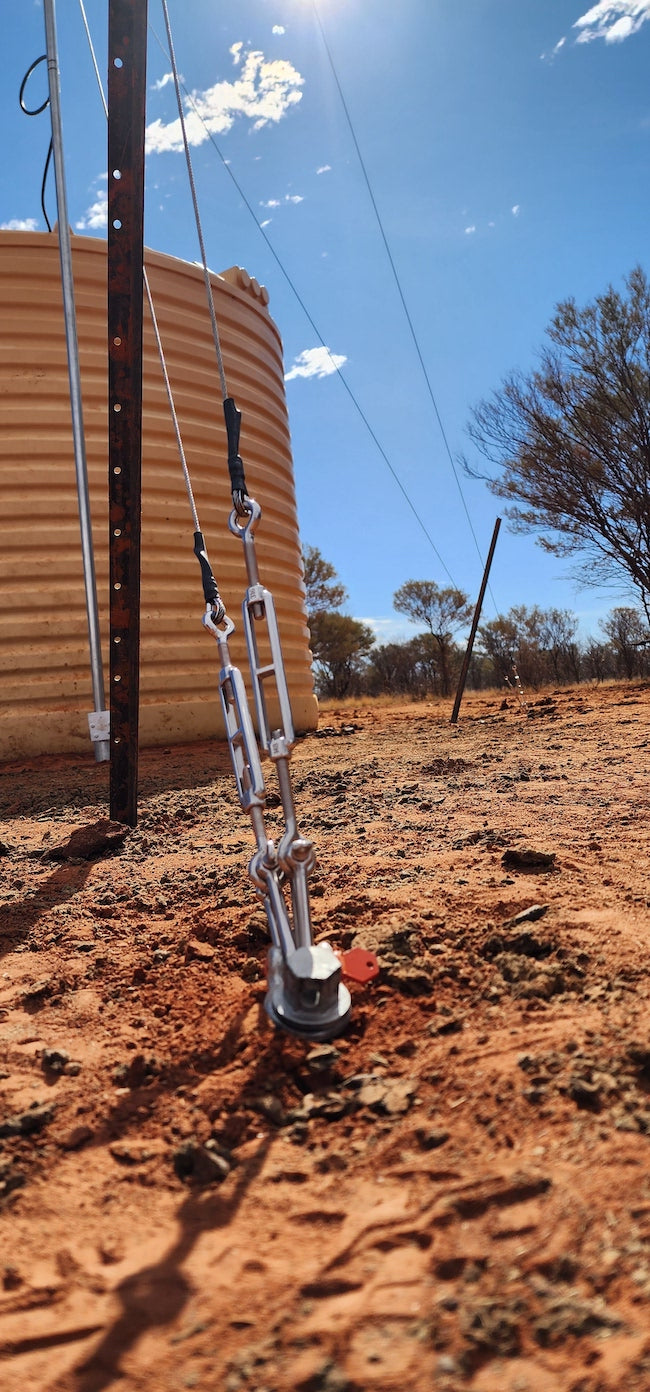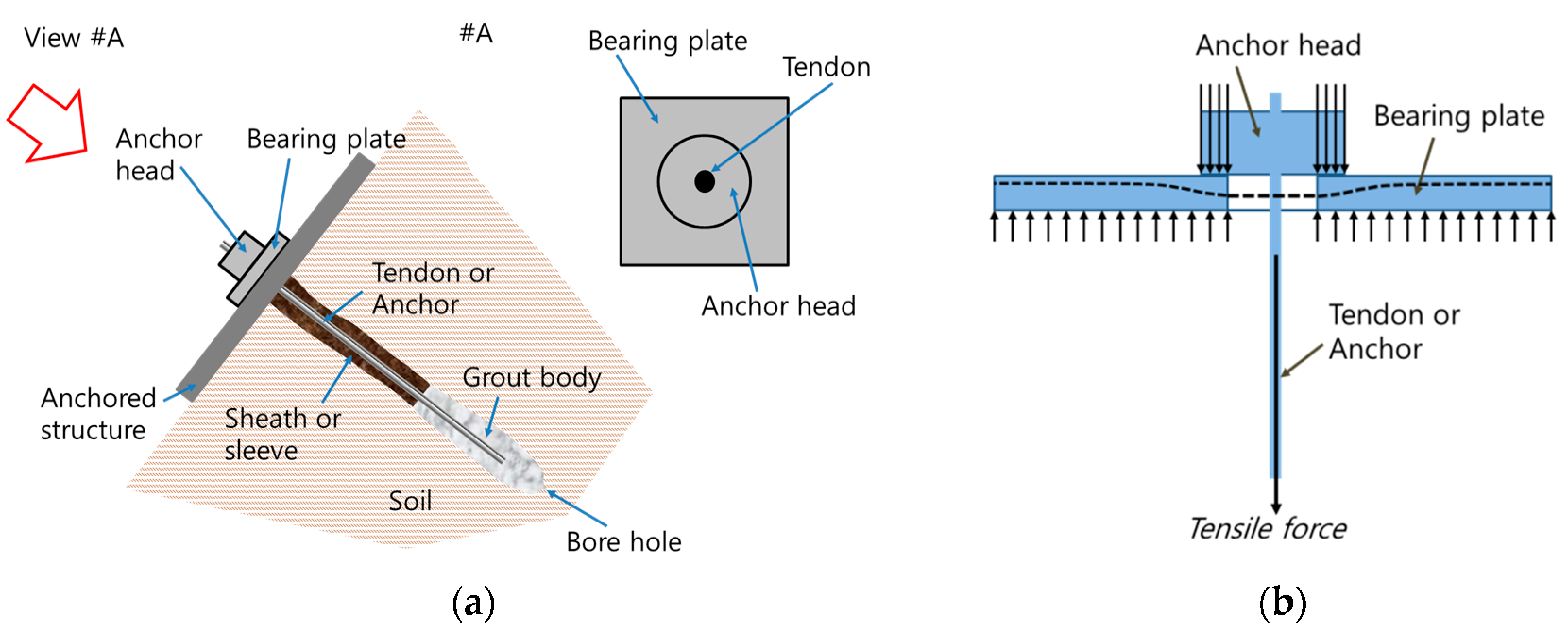Exactly How Sturdy Earth Anchors Work: A Comprehensive Guide to Dirt Anchoring Solutions
Heavy-duty Earth supports play an essential function in providing security and assistance in various building applications. By embedding deeply into the ground, they resist vertical and lateral pressures properly. Various kinds of anchors accommodate various dirt problems, making them flexible. Recognizing their mechanics and setup methods is vital for taking full advantage of efficiency. What aspects affect their efficiency, and how do they compare to conventional methods? The responses might surprise you.
Understanding Durable Earth Anchors
Sturdy Earth supports offer as necessary parts in different construction and landscaping projects, offering security and support in challenging soil conditions. These anchors function by being installed right into the ground, where they stand up to vertical and side forces. Their design enables for safe add-on to frameworks, guaranteeing they stay secured against soil motion or outside loads.The performance of sturdy Earth anchors mostly depends upon the type of dirt and the support's installation depth. Appropriate setup techniques are crucial, as they determine the anchor's holding ability. Environmental aspects, such as moisture and freeze-thaw cycles, can also affect performance.These supports are frequently utilized in applications ranging from securing fences and retaining walls to supporting momentary structures throughout adverse weather problems. Comprehending the principles behind sturdy Earth anchors is essential for experts seeking to boost the resilience and security of their tasks.
Types of Heavy-Duty Earth Anchors
Various sorts of sturdy Earth supports are made to meet specific demands based on soil conditions and job needs. Helical supports, including screw-like blades, are effective in softer dirts, using high load capacities and very easy setup. Driven supports, which are inculcated the ground, are suitable for rough terrains and provide immediate lots support. Tie-back anchors are typically utilized in maintaining wall applications, enabling side assistance by anchoring right into the ground at an angle. An additional type is the cast-in-place anchor, suitable for concrete applications, as they are integrated into foundations for enhanced security. Lastly, soil screw anchors are functional alternatives that can be made use of in different soil kinds, giving reputable stress and compression capabilities. Each type serves distinctive applications, making certain stability and safety and security in construction and landscaping projects. Comprehending these alternatives enables educated decisions in picking the ideal Earth anchoring option.
The Mechanics of Soil Anchoring

Comprehending the technicians of dirt anchoring needs an evaluation of various kinds of Earth supports and their installment strategies. Each anchor type offers distinct features that influence its performance in various soil conditions. Proper setup methods are necessary for making the most of the securing system's security and efficiency.
Kinds Of Earth Anchors
Earth anchors, essential parts in dirt anchoring systems, can be found in numerous kinds, each developed for details applications and dirt conditions. One of the most common kinds consist of screw supports, which are turned into the ground, offering solid side resistance. Helical supports feature blades that permit efficient setup in numerous dirt kinds, making them suitable for both long-term and short-lived applications. Driven anchors, normally made from steel, are inculcated the soil and work in rocky or dense environments. Auger supports make use of a helical design to promote installation in softer soils. Plate supports consist of a level plate buried flat, dispersing tons over a bigger area, suitable for applications needing high lots capacities in cohesive soils.
Setup Techniques Explained
Appropriate installation methods are essential for the efficiency of dirt anchoring systems. The procedure usually starts with website analysis, validating the chosen location can support the support's tons. After figuring out the correct anchor type, correct opening deepness and angle need to be developed. The installation involves driving the support into the ground using customized equipment, such as hydraulic or hands-on motorists, to achieve best embedment. Post-installation, tensioning the anchor is vital to guarantee security; this is typically validated with tons testing. In addition, bordering dirt conditions should be kept an eye on to stop displacement. Following these methods not just enhances the anchor's efficiency yet likewise prolongs its lifespan, supplying reputable assistance for numerous applications.
Applications of Heavy-Duty Earth Anchors
While heavy-duty Earth anchors are commonly associated with building and landscape design, their versatility expands to a selection of applications across different markets. In civil engineering, they provide necessary assistance for retaining wall surfaces, making sure stability in locations vulnerable to dirt disintegration. The marine industry utilizes these anchors for safeguarding anchors and marinas, protecting against movement caused by currents and tides. Furthermore, in the telecom market, sturdy Earth anchors are substantial for stabilizing cell towers and various other tall frameworks versus wind pressures. Agricultural applications likewise profit, as these anchors can protect frameworks like greenhouses and animals fencing, ensuring they endure extreme weather condition problems. In eco-friendly energy projects, such as wind farms, Earth anchors play a vital function in safeguarding generator foundations, improving overall safety and performance. This broad series of applications highlights the versatility and integrity of sturdy Earth supports throughout numerous fields.
Benefits Over Conventional Anchoring Approaches
Although standard anchoring methods have actually long been trusted for stability, heavy-duty Earth supports provide significant advantages that boost performance and effectiveness. One major benefit is their exceptional load-bearing capacity, which allows them to endure greater forces without failure. This strength makes them optimal for requiring applications, such as in building and utility installations.Additionally, sturdy Earth supports are designed for deeper installation, providing higher stability in numerous dirt conditions, including sandy or loose dirts. Their resistance to corrosion and ecological elements guarantees a longer lifespan and reduced upkeep prices compared to traditional methods.Moreover, these anchors can be installed with marginal disruption to the surrounding area, protecting the stability of the landscape. Generally, sturdy Earth anchors provide a trusted and reliable service for anchoring requirements, surpassing the constraints often related to conventional anchoring strategies.
Installment Refine and Finest Practices
The setup procedure for dirt securing solutions click here to read starts with complete prep work and website assessment to assure peak performance. Following this, a step-by-step installation overview gives clear guidelines for effective application (construction site anchors). Sticking to these finest techniques is crucial for achieving dependable and long-lasting anchoring results
Prep Work and Website Evaluation
Efficient preparation and complete website assessment are essential actions in the setup of soil anchoring solutions. Before setup, the soil type should be assessed to identify its bearing ability and suitability for anchoring. Performing a geotechnical survey can offer essential information concerning soil make-up, wetness levels, and prospective ground movement. Furthermore, recognizing existing structures, plant life, and utilities is necessary to stay clear of disturbance throughout setup. The area must be free from debris and barriers to ensure secure gain access to for equipment. Weather need to likewise be kept an eye on, as adverse problems can affect both security and installment efficacy. By meticulously preparing the site and examining all pertinent factors, the chance of effective support efficiency is significantly raised.
Step-by-Step Setup Guide
An extensive installation process is vital for accomplishing perfect efficiency of dirt securing options. The installation begins with choosing the ideal anchor type and ensuring the site is free from debris. Next off, correct opening placement is determined based upon load demands. Once the place is established, holes are pierced to the specified depth and diameter using the proper tools. The support is then placed right into the hole, making sure it is lined up appropriately. After safeguarding the anchor, soil is backfilled and compressed to enhance security. It is vital to adhere to maker standards throughout the procedure. A post-installation assessment validates that the anchors are adequately positioned and operating as planned, providing trustworthy assistance for the designated application.

Maintenance and Inspection of Earth Anchors
Regular upkeep and examination of Earth anchors are essential for guaranteeing long-term efficiency and security. Regular checks permit the very early discovery of concerns such as corrosion, loosening up, or dirt movement. Assessors must search for signs of corrosion or destruction on the support elements, especially at the link points. Additionally, the surrounding soil should be assessed for disintegration or adjustments in moisture material, which can influence anchor effectiveness.It is recommended to develop a regular assessment routine, ideally a minimum of as soon as a year, relying on ecological problems. Throughout assessments, all visible components ought to be cleansed to eliminate dust or debris that might conceal prospective problems. Any indications of distress, such as tilting structures or unusual settling, must trigger immediate assessment. Proper paperwork of assessments can help in monitoring anchor performance in time and help with prompt upkeep activities, making certain the anchors stay practical and reputable.
Frequently Asked Inquiries
What Materials Are Heavy-Duty Earth Anchors Generally Made From?
Durable Earth anchors are commonly built from long lasting materials this article such as galvanized steel or stainless steel, guaranteeing stamina and resistance to rust. These products supply resilient support and security in various soil problems and applications.
Exactly How Do Dirt Conditions Affect Anchor Efficiency?
Dirt conditions greatly influence support efficiency. Elements such as dirt kind, moisture content, and compaction impact the support's hold and stability, with cohesive soils usually giving far better resistance than loosened or sandy dirts, impacting overall efficiency.
Can Heavy-Duty Earth Anchors Be Reused After Elimination?
Durable Earth anchors can be recycled after removal, given they are examined for damage and wear. Proper cleaning and upkeep boost their durability, guaranteeing effective efficiency in subsequent installments when problems enable secure reinstallation.
What Are the Ecological Impacts of Making Use Of Earth Anchors?
The environmental effects of making use of Earth supports consist of possible dirt disruption, interruption of regional environments, and possible contamination of groundwater. Nevertheless, if used responsibly, their advantages frequently surpass these problems, advertising stability in different applications.
Exactly how Do I Choose the Right Anchor for My Project?
